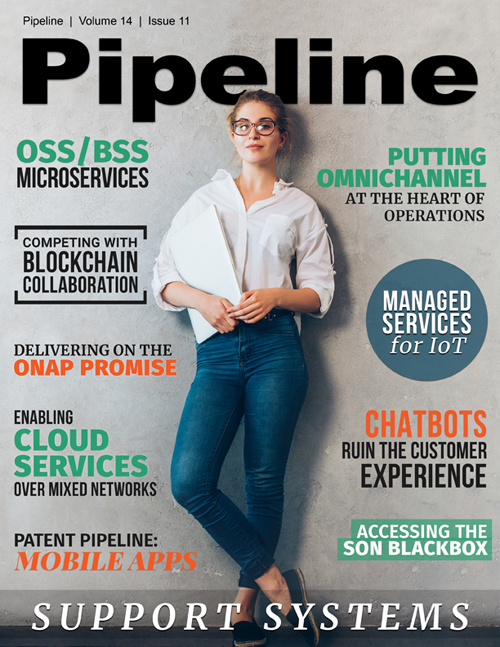Competing with Blockchain Collaboration
With all the different challenges, service providers are coming to the realization that offering future omnichannel services in real time across multiple platforms might be a bigger challenge. Tackling this challenge may require them to work in bigger alliances. Every now and then, we do see a collaboration between friendly service providers to prove or provide specific joint ventures. For example, Colt and Verizon recently announced their trial towards limited access of each other´s resources in SDN space. To unravel the full business potential, however, service providers will be required to further open their operations via controlled API. The open telecom API is probably one of the key components of the future, necessary to make the digital transformation a reality—and a success story.
The problem with solutions
Automation remains a hotbed of activity. For instance, with nearly 400 different platforms in IoT, and service providers still trying to get their footing on their digital transformation journey, automation is an absolute necessity. Manually managing billions of connected “things” is simply an impossibility.
Many technology companies are pushing artificial intelligence (AI) and an “AI for everything and everywhere” agenda, whether or not AI makes sense or if it can do an effective job. AI may work in cases such as RAN network optimization with 300-400 parameters, but self-optimization of networks sounds still very futuristic. Networks are becoming dynamic, living things. And, while AI may be effective for some historical use cases, no one knows exactly what the future holds. What we do know is that AI needs to be trained and have access to rich data sources to make fully automated decisions.
As part of the digital transformation journey, new roles are also created. The CIO role is evolving (e.g. becoming CTIOs), and Chief Data Officers are taking the task of refining the “new oil,” or customer data, in real time. The potential of AI-driven big data analytics can help service providers make faster decisions, providing the data is properly processed. In this scenario, closed-loop automation has another meaning. Automation without integrating big data and adaptive policy control seems to be another driver for “reimagining OSS/BSS.” And as they evaluate their AI strategy, and how it works within their environment, they must determine how much AI they need, how can they troubleshoot issues with their AI in operations, and how to gain adequate in-house AI skillsets.
Operations support systems (OSSs) have always been essential software tools for the telecom industry, but as networks converge on IP/NFV/SDN, and business relationships and standards change, there is more emphasis on OSS than ever before. The major types of operations and billing support systems in this fast-changing industry have experienced a shift towards full automation. Service assurance big ticket items such as “revenue assurance" issues that will help service providers prevent their revenue from "leaking" away due to common technology errors are now part of customer engagement. Telecom service providers have to balance network evolution, new services and changing business processes and OSS needs. Because of this, the boundaries of BSS/OSS have become blurry.
OSS, or the whatever the new category may be, has to undergo substantial changes. OSS vendors typically made tactical surgeries on the surface without fundamentally changing their platforms. After all, they had to provide migration strategies for their existing customers. The new challenges in OSS however, calling for a radical OSS redesign—from scratch. Native Cloud operation systems are needed to scale up and out elastically based on customer and environmental needs. Service providers have neither the time nor the competitive and financial power to buy more shelfware in an old monolithic fashion. They need to be able to buy functionalities as and when they need it. They need to shuffle around licenses across a virtually and physically global network without being punished by software or platform providers.
While many CFOs are pushing the agenda to increase the profitability through automation, or simply to bleed less per the above, they typically end up controlling cost; but they can stifle innovation at the same time. That is why they see “ONAP-like” initiatives as a hope. They can appear to be “cheap” or even “free” innovation alternatives. However, as many industry analysts have already expressed, ONAP-like initiatives are neither cheap nor easy. Maintaining eight million lines of code requires a monumental organizational transformation and a shift from operating as a telecom company to operating as an IT organization.



















